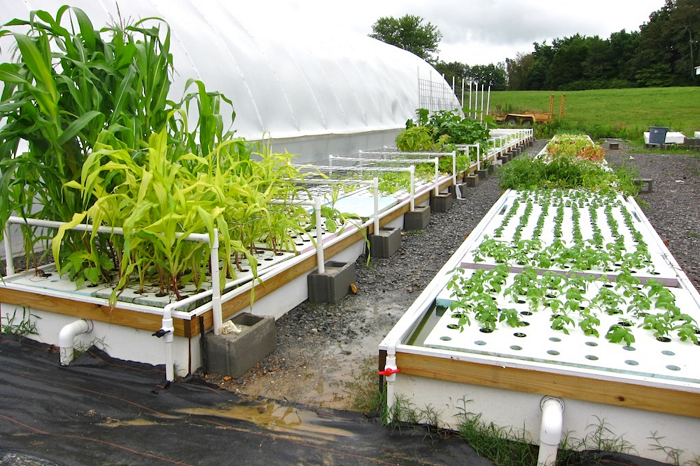Budidaya Jagung Manis: A Sweet Business Opportunity

What is Jagung Manis?
Jagung Manis is a type of sweet corn that can be consumed both raw and cooked. It has a distinctively sweet taste and is rich in essential nutrients such as fiber, vitamins, and minerals. It is a favored snack among children and is also used in various culinary dishes.
Why venture into Jagung Manis Business?
Budidaya Jagung Manis has recently become a lucrative business venture due to its rising demand. It is relatively easy to grow, and its return on investment is high. With the increasing awareness of the health benefits that come with the consumption of sweet corn, the market demand for Jagung Manis has equally increased. As a result, starting a business that caters to the growing demand for this sweet corn variety can yield significant financial rewards.
What are the benefits of Budidaya Jagung Manis?
Beyond its sweet taste, Jagung Manis also has various benefits. It is a good source of dietary fiber and can help in maintaining optimal digestive health. It also contains essential vitamins such as vitamin A and vitamin C, which can aid in maintaining healthy eye and skin cells, particularly for children. Additionally, various studies have linked the consumption of sweet corn with the potential prevention of various health conditions such as heart diseases, hypertension, and cancer, among others.
Ideas for a Budidaya Jagung Manis Business
There are numerous ways to venture into Jagung Manis distribution and sales business. For instance, one can decide to start small-scale farming and sell their produce directly to customers or retailers. Alternatively, one can choose to establish a processing plant where Jagung Manis is dried and packaged for commercial distribution. Other innovative business ideas include initiating a franchise program that solely deals with Jagung Manis products. This can facilitate the production and distribution process, particularly for entrepreneurs who do not have access to land to execute farming.
How to grow Jagung Manis
To start a Jagung Manis farming business, one needs to prepare adequately. For seedlings, select the best-quality seeds that are suitable for your region. Then, create a seedbed in an area with sufficient sunlight and water supply. Sow the seeds and cover them with a thin layer of soil. Ensure that the seedbed is watered regularly, especially in the initial growth stages, to facilitate germination. Once the seedlings are around six inches tall, transplant them to their final location. Jagung Manis requires sufficient soil moisture, so make sure the soil looks damp and not too dry. The entire process takes an average of 70 – 90 days to carry out and can produce as much as 20 – 30 cobs.
Tips for venturing into Jagung Manis Business
As with any business, there are challenges you may encounter when venturing into the Budidaya Jagung Manis business. To mitigate these, here are a few tips for success:
- Start small –You don’t have to have a large farm when starting. Begin with a small area that can cater to a manageable-sized farm and gradually expand. This will enable better risk management during the early stages of the business.
- Market research – Carrying out extensive market research is key to identifying profitable niches within the sweet corn market. This includes understanding consumer preferences, competitor analysis, and identifying cost-effective selling points.
- Build a reliable supply chain – Ensure that you have a reliable supply chain that guarantees the timely delivery of your Jagung Manis to the market. This will also enable you to sustain a competitive advantage in an evolving market.
- Utilize Technology: Technology has been incorporated into the production process in farming to enhance productivity and reduce operational costs. Consider investing in farming technologies that can aid in monitoring soil temperature, optimize water usage and reduce labor costs.
Ganyong Farming and Its Business Opportunities

What is Ganyong?
Ganyong or canna edulis is a type of agricultural crop that is rich in essential nutrients such as starch, amino acids, and minerals. It is a root crop that has a potato-like texture when cooked and is a favorite among consumers who seek a healthier alternative to potatoes or rice.
Why venture into Ganyong Business?
Ganyong has various benefits that make it an attractive business venture. For entrepreneurs, it has an excellent return on investment, and it requires low capital investment since it can be grown on small pieces of land. Additionally, Ganyong appeals to the growing demand for healthier food choices among consumers, making it a lucrative niche market.
What are the benefits of Ganyong Farming?
Beyond its nutritional benefits, Ganyong has various benefits, one of which is its eco-friendliness. It is highly resistant to pests and insects, which eliminates the need to use potentially harmful chemicals for its growth. It requires minimal land for expansion, and its production does not require an extensive irrigation system, eliminating the negative ecological impact that water-intensive agriculture may bring.
Ideas for a Ganyong Business
There are various ways one can venture into Ganyong Business. One approach is to initiate small-scale Ganyong farming and sell the produce to wholesalers or directly to consumers. Another approach is to establish a processing plant that turns Ganyong into various food products that can be sold commercially. This idea appeals to entrepreneurs who may not have access to large farmlands and still want to venture into agriculture. A different approach is to incorporate new technologies in Ganyong farming and establish a Ganyong-based franchise that offers a broader consumer base.
How to Farm Ganyong
To start a Ganyong farming business, there are critical things to observe. These include selecting suitable planting materials, adequate land preparation, and proper maintenance of the crops throughout the growth process. Ganyong thrives in well-drained soils that are rich in organic matter. Land preparation involves tilling, plowing, and harrowing the soil to remove weeds and prepare it for planting. Once the land preparation is complete, plant the Ganyong seeds and ensure that they are well-watered regularly. Within months, the crop is ready to be harvested. One acre of land can produce between 10 -15 tons of Ganyong roots.
Tips for venturing into Ganyong Business
Like Jagung Manis farming, Ganyong farming also has its challenges, and to mitigate these, it is essential to observe the following tips:
- Identify Market Niche: Before venturing into Ganyong farming, carry out market research to identify a profitable niche. This will enable you to tailor your business operations to specific consumer needs and preferences.
- Adopt Sustainable Production Methods: In today’s global market, sustainability is an essential aspect of the business. Consider eco-friendly practices such as organic farming, pest control measures that eliminate the use of harmful chemicals, and proper waste disposal techniques that do not harm the environment. This will not only give your business a competitive edge but appeal to consumers who care about the environment.
- Collaborate with Other Farmers and Industry Players: Collaborating with other farmers, wholesalers, and food processors can foster competitiveness in the market. Consider joining farmer groups or industry associations that can enhance your knowledge and offer you a networking platform.
- Observe Good Agricultural Practices: Because Ganyong requires minimal inputs, it is easy to overlook critical agricultural practices, such as maintaining soil fertility, crop rotation, and pest control. It is, therefore, essential to establish a farming calendar outlining key practices and adhere to them religiously.
Budidaya Aquaponik: A Two in One Home Business

What is Aquaponik?
Aquaponics is a unique agricultural method that combines fish farming and hydroponic farming techniques. It involves cultivating aquatic animals and plants together in a mutually beneficial cycle that mimics the natural ecosystem. Basically, Aquaponics is a soilless form of farming that utilizes nutrient-rich water from fish tanks to nourish plants without the need for soil.
Why venture into Aquaponik Business?
Aquaponic farming is an exciting business venture due to the numerous advantages it offers. First, it is a highly efficient farming method that reduces water usage by up to 90%. Secondly, it produces highly nutritious fresh produce and fish products, guaranteeing year-round income. Additionally, Aquaponics requires minimal land, suitable for urban and peri-urban residents who want to engage in agriculture within limited land areas. With the increased interest in sustainable urban farming, Aquaponics is steadily gaining popularity among consumers and entrepreneurs.
What are the benefits of Aquaponik Business?
Aquaponics has numerous benefits that make it an attractive business venture worth considering. One of the key benefits is that it produces organic food products that are highly nutritious and free of harmful chemicals commonly used in conventional farming methods. Additionally, Aquaponics has a higher yield per unit area, consumes less water, and eliminates the negative ecological impact that arises from conventional farming.
Ideas for starting an Aquaponik Business
Starting an Aquaponics farming business does not require a large area. One can start small and scale up gradually as their customer base grows. One approach is establishing an Aquaponics farm that produces both fish and vegetables for sale to individuals and retailers. Alternatively, one can decide to concentrate solely on fish or vegetables and form partnerships with other Aquaponics farmers dealing in one product line while supplementing the other. The incorporation of value-addition activities such as food processing can equally increase the value of your Aquaponic products and diversify revenue streams further.
How to start an Aquaponik Business
Starting an Aquaponics business entails selecting the ideal hydroponic and aquaculture system to use that aligns with your overall business goals, geographical location, and the volume of production intended. The key steps involved in setting up an Aquaponics farming system includes;
- Setting Up a Fish Tank – This involves acquiring a suitable fish tank, setting it up correctly and introducing the appropriate fish species that thrive in your location, and are in high demand by consumers.
- Setting up a hydroponic system – Here, select and prepare the hydroponic system you intend to use, depending on the type of plants you intend to grow and the available space. This may include nutrient film technology, deep water culture, or flood and drain systems.
- Establishing the Aquaponics Cycle – One critical component of Aquaponics is establishing the growth cycle of your fish and plants. This includes maintaining the correct pH levels, water temperature, and oxygen supply rates to the fish and plants.
- Seeding and Harvesting: Once your system is stable, introduce seedlings to your hydroponic farming and monitor their growth for maturity. Once the plants are mature, you can start harvesting and selling your fish and vegetables products.
Tips for venturing into Aquaponics Business
Venturing into Aquaponics farming can be challenging but very rewarding. To mitigate some of these challenges and maximize profits, consider the following critical tips:
- Stay informed and be willing to learn – Aquaponics combines two farming methods that may require additional skills beyond traditional farming. Stay informed by attending workshops, conferences and participating in Aquaponics forums that offer networking opportunities and knowledge exchange.
- Invest in technology – Aquaponics requires constant monitoring of different parameters such as pH, nutrient levels, water temperature, among others. Invest in technologies that can monitor these parameters and alert you if something is out of balance.
- Be Patient – Aquaponics is an exciting venture, but it may take some time before your system matures to start producing significant yields. Be patient and willing to experiment with different crops, fish species, and farming methods to identify those that work best for your location.
- Partner with other stakeholders – Aquaponics is a relatively new but rapidly evolving industry. Consider forming partnerships with other stakeholders within your niche and other industries that can enhance your productivity and knowledge base.












